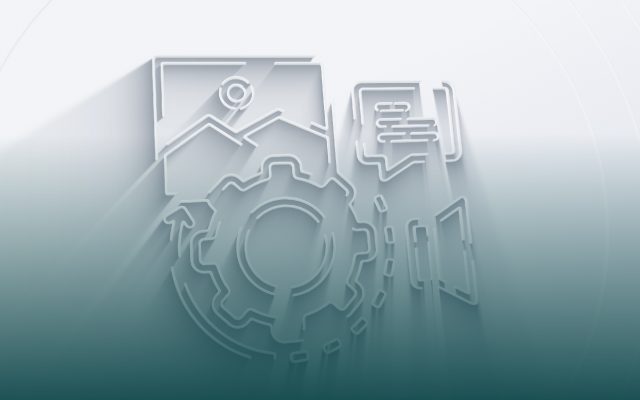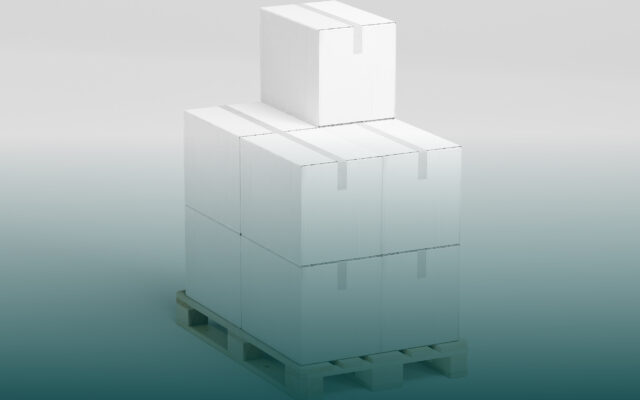In today’s competitive market, personalization is no longer an option – it’s a necessity. According to the McKinsey report, 71% of clients expect businesses to provide them with personalized experiences.
Customers demand interactions that are customized to their unique needs and wishes. They want to be heard, understood, and empowered to make choices that reflect their individuality.
This is where product configurator software steps in as a game-changer. It’s not just about streamlining the ordering process. It’s about transforming it into an engaging, interactive experience that puts your customers at the center.
The purpose of this article is to explore what configurator software is, what features it has, and how it can benefit your business. Keep reading to discover how the product configurator revolutionizes customer experience, turning them from bystanders into active co-creators.
What Is Product Configurator Software?
An e-commerce product configurator is a tool that allows businesses to offer customizable products through a convenient user interface. This software enables customers to select, design, or customize products according to their preferences before making a purchase. According to the Deloitte report, more than 50% of customers are interested in customized services and products, which increases the popularity of such software among businesses.
Configurator software simplifies the customization process for companies. It automates the configuration of complex products, which can have multiple options and variants. The main functions of product configuration software include:

- Visualization. A configurator provides a visual representation of a product as customers select different options. It helps visualize what the finished product will look like.
- Pricing updates. The software automatically updates the price as users add or remove different features or customizations. This ensures that users always see the accurate cost of their configurations.
- Compatibility checks. Product configurator software automatically ensures that the chosen combinations are feasible, preventing incompatible choices and minimizing errors during production.
- User experience. Configuration tools enhance the shopping experience by making it interactive, engaging, and user-friendly. This often leads to higher customer satisfaction and increased sales.
Types of E-commerce Product Configurators
In 2024, the product configurator market size was valued at $1.1 billion. What’s more, by 2031, this market is expected to reach $3.3 billion, Verified Market Research reports.
Configurators can vary significantly in complexity and functionality to suit different types of businesses and products. Let’s take a look at the basic breakdown of e-commerce configurator types:
Visual configurators
Visual configurators are designed to provide a graphical representation of a product as it is being customized.
They often use 2D or 3D models to allow customers to see real-time changes. This type of e-commerce product configurator is particularly beneficial for industries where aesthetics and design are key purchasing factors, such as furniture, clothing, or custom vehicles.
Rule-based configurators
These configurators rely on a set of predefined rules to ensure that the configurations customers choose are viable.
Rule-based configurator software is essential for complex products that have interdependent features, such as custom computers, industrial machinery, or even modular homes. They help prevent incompatible configurations and ensure that the final product is functional.
CPQ (Configure, Price, Quote) configurators
CPQ configurators extend beyond just configuring a product. They integrate pricing and quoting functionalities directly into the configuration process. This makes this software type highly effective for sales teams and B2B environments.
These e-commerce product configurators can handle variable pricing, discounts, and custom quote generation, which are crucial for products with a large number of customizable options and variable cost factors.
AR/VR configurations
AR technology used in retail can also be implemented in product configurators. Augmented Reality (AR) and Virtual Reality (VR) configurators take visualization to the next level. They allow customers to see their customized products in a realistic virtual environment or how they would appear in the real world.
This type of software is particularly effective for products that need to be visualized in a specific environment, such as interior decor, architectural projects, etc.
Mobile configurators
With the increasing use of smartphones and tablets for shopping, mobile product configuration software has become essential.
These are optimized for mobile platforms and designed to provide a seamless mobile experience. Mobile configurators are crucial for reaching a broader audience, especially in consumer-centric markets where decisions are often made on the go.
As you can see, each type of product configurator software offers distinct advantages and can be designed based on the specific requirements of a business and its customers.
Contact us to figure out what type of configurator your customers will like and how to add such a solution to your systems.
Key Features of Effective Product Configuration Software
To maximize the efficiency and appeal of product configurator software, certain key features are important. Here’s a detailed look at these features:
User-friendly interface and design
A user-friendly interface is crucial for ensuring that customers can use the configurator easily without requiring specialized knowledge.
The design should be intuitive, with clear instructions, accessible menus, and responsive design elements that adapt to various devices and screen sizes. Ease of use will encourage customers to experiment with their customizations, thereby increasing engagement and satisfaction.
Integration with existing systems (ERP, CRM, or others)
Effective product configurators are not standalone tools. They should integrate seamlessly with existing ERP and CRM systems. The integration enables a smooth flow of data across various departments.
For instance, when a customer places an order, the configurator can automatically update inventory levels in the ERP system and record customer interactions for future reference in the CRM system. Such integration helps maintain data consistency and streamlines operations across different sectors of the business.
Real-time pricing and custom quote generation
As customers select and customize products, it’s essential for them to see how each choice affects the overall cost. Effective product configurator software provides real-time pricing updates. This helps customers make purchase decisions based on their budget.
Additionally, for complex products or bulk orders, the software can generate custom quotes instantly, which will facilitate a quicker sales cycle, enhance customer satisfaction, and provide transparent pricing immediately.
Visual and interactive customization capabilities
To truly engage customers, configurator software should offer advanced visual and interactive capabilities. This includes 3D models, AR, and VR technologies, allowing customers to view their customizations in a realistic and immersive environment. Such visual tools help customers better understand what they are purchasing and how various options impact the product’s appearance or functionality.
By incorporating these features, product configurator software can become a powerful tool in your digital strategy, enhancing user engagement, streamlining operations, and ultimately driving sales and growth.
Configurator Software Benefits
As we’ve figured out, the use of product configurators has the potential to become a big e-commerce trend. Let’s explore the key benefits of integrating product configurator software into your systems and how it can accelerate organizational success.

Enhanced customer experience through personalization
Personalization is key to enhancing customer satisfaction and loyalty in today’s market. Product configurator software excels in providing a personalized shopping experience. It allows users to customize products to their specific preferences.
This interactive process not only makes shopping enjoyable but also gives customers a sense of ownership over the product design, leading to higher satisfaction rates and repeat business.
Improved operational efficiency by reducing errors in order specifications
One of the significant challenges in handling customized orders is the risk of human error in order specifications. As a result, this can lead to costly reworks and customer dissatisfaction.
Product configurator software automates the configuration process, ensuring that only viable product combinations are offered and recorded.
This precision eliminates the common errors associated with manual entry and interpretation of customer requirements. As a result, businesses can enjoy smoother workflows and reduced operational costs.
Increased sales through upselling and cross-selling features
Product configurator software encourages customers to explore and select additional features and upgrades as they customize their products. By presenting compatible options and upgrades during the configuration process, the software naturally facilitates upselling and cross-selling.
For instance, a customer customizing a laptop might be prompted to upgrade to a higher resolution screen or additional memory, increasing the average order value. These prompts are designed to be helpful and relevant, enhancing the customer’s product while simultaneously boosting sales.
Thus, product configurator software delivers tangible benefits across various facets of a business. It has the potential to foster growth through improved customer engagement, streamlined operations, and enhanced sales strategies.
Interested in implementing configurator software on your website?
Contact us to get a free consultation and an effective strategy for adding this powerful solution to your store.
7 Steps to Implement an E-commerce Configurator
Implementing a custom-built product configurator requires a business to make informed decisions on what features to design and who can be requested to develop it from scratch. Here’s a step-by-step guide for implementing such software in your business:
Step 1: Define your goals. Define your business objectives, expected outcomes, and the specific functionalities you desire in a product configurator. Base your decisions on the peculiarities of your business. For instance, the owner of a clothing store may need a different set of features compared to an electronics store.
Step 2: Choose a development partner. Look for a software development partner with specific experience in building product configurators or similar tools.
Here at Forbytes, we have vast experience building various solutions for e-commerce businesses, from management systems and security enhancements to e-commerce extensions and product configurators.
Get in touch with us to share your request and discover how we can help.
Step 3: Engage in collaborative planning. After choosing the partnering company, engage in planning and strategy workshops to agree upon the project scope, timelines, and resources required.
Step 4: Agree upon the development process. Make sure that all aspects of the project, from scope to deliverables, are clearly outlined in the contract with your software development partner.
Step 5: Develop the solution iteratively. Set up a system for regular updates and checkpoints with your development partner to meet the agreed specifications and quality standards.
Professional software engineering companies, including Forbytes, incorporate mechanisms for regular feedback and revisions. These are vital for refining the configurator to better meet user needs and business goals.
Step 6: Test the solution. Engage both your team and your software partner in rigorous testing of the e-commerce product configurator to make it robust and user-friendly.
Step 7: Launch and support the solution. Ensure your partner provides comprehensive post-launch support and maintenance, helping to address any issues quickly and efficiently, and update the system as necessary. Forbytes offers full-cycle development services, supporting our clients after launch and providing quality maintenance services.
Get in touch with us if you are looking to elevate your business with tailored, innovative solutions and dedicated ongoing support.
How Forbytes Can Help
In this article, we have outlined the advantages and transformative potential that product configurator software brings to the table. By enabling customization options, this software enhances the customer experience, reduces errors, boosts efficiency, and streamlines operations.
The positive impact of personalization on sales and conversions cannot be underestimated. We encourage companies to explore a custom-built product configurator as an effective business solution. Being a professional development partner, we can help you with this process, ensuring that your investment in product configurator software is both strategic and effective.
Contact Forbytes today to schedule a free consultation and discover how our experts can build a solution that meets your unique business requirements and user needs.












